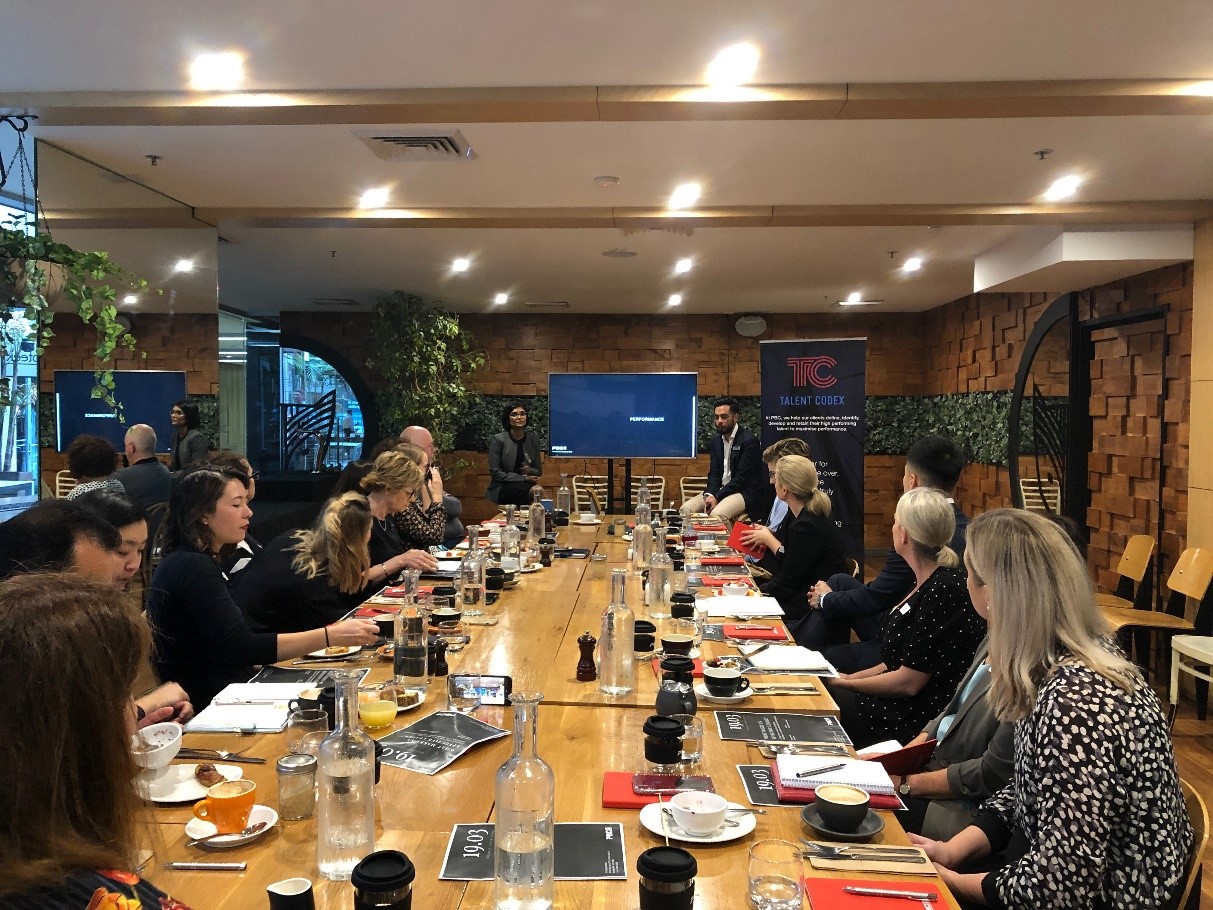Our solutions cover the entire employee lifecycle from selection through to development, focusing on individuals, teams and organisational solutions.
What makes an effective leader?

Connecting the dots between personality, behaviour and performance.
Last month, we had the pleasure of co-hosting PBC’s first Breakfast Insight Series event for 2019, focusing on the characteristics of effective people leaders. Research has found many different, and at times conflicting, factors that correlate with leadership effectiveness. Oftentimes, this has been due to different contextual factors that are at play in different organisations and different industries.
For our research, we wanted to strip away the contextual noise and focus in on the characteristics that define effective leaders, regardless of the environment they are operating within. The aim of our research was to use this overarching definition to explore the behaviours and personality characteristics most closely associated with effective leaders.
What do they look like?
Using Hogan’s perspective on effective leadership and the model of transformational leadership, we defined four key areas that all leaders need to demonstrate in order to be effective. We conceptualised these as the key outcomes that need to be demonstrated for a leader to be a truly effective leader:
- Consistently meeting the requirements of their role as a leader
- Building and maintaining high performing teams
- Creating significant positive outcomes for the organisation
- Being an exemplary leader within the organisation
How do they do it?
Over the past year, PBC collected and correlated data from hundreds of individual 360 feedback surveys with ratings on the four outcomes of effective leadership mentioned above. Across all competencies measured in the Hogan 360, the top 10% of leaders (as measured against the four outcomes above) consistently outperformed the bottom 10% of leaders. Looking closer at the data, the most significant differences between the groups were for the competencies:
- People Skills – engaging with others and being seen as approachable and authentic
- Team Player – actively building team functionality and cohesion
- Motivation – creating a work environment that allows everyone to become engaged
This suggests that the key behaviours that effective leaders exhibit are demonstrating strong people skills, being warm and thoughtful towards others, building trust and loyalty with others, sharing their time and expertise and working hard to improve team morale, coaching and developing others.
What characteristics do they possess?
We also correlated the four leadership effectiveness outcomes with our suite of personality assessments, namely the Hogan Personality Inventory (HPI), the Hogan Development Survey (HDS), and the Motives, Values, Preferences Inventory (MVPI).
When we look at a leader’s day-to-day personality (HPI), the key areas where the top 10% of leaders differed from the bottom 10% of leaders were:
- Adjustment – effective leaders were seen as more resilient, calm, even-tempered and confident
- Interpersonal Sensitivity – effective leaders were seen as more warm, sensitive and relationships oriented
- Prudence – effective leaders were seen as more conscientious, detail oriented and hard working.
On the other hand, when we look deeper into a leader’s dark side or derailers (HDS), the key areas where the top 10% of leaders differed from the bottom 10% of leaders were:
- Excitable – effective leaders were less likely to be seen as emotionally volatile and lacking perseverance
- Sceptical – effective leaders were less likely to be seen as mistrusting, fault finding and cynical
- Reserved – effective leaders were less likely to be seen as emotionally withdrawn and aloof
Finally, when we look at the underlying values (MVPI), the key areas where the top 10% of leaders differed from the bottom 10% of leaders were:
- Recognition – effective leaders were less likely to be focused on individual achievement or seeking recognition for their own achievements
- Commerce – effective leaders were less likely to be driven purely by financial outcomes and the bottom line.
Connecting the dots
Through our research, we were able to identify the key behaviours that differentiate effective leaders. We have also been able to identify the key personality characteristics that are likely to lead to such behaviours, as measured through the Hogan 360.
If you are a leader that matches these personality characteristics, the focus for you will be to harness your natural strengths to demonstrate the behaviours that distinguish effective leaders. If your personality profile does not match these characteristics, keep in mind that personality isn’t fate. While it may take a little more effort and mindful action, you can still demonstrate the behaviours associated with effective leadership.
To find out more about effective leadership or any of our products, get in touch: info@peterberry.com.au
Latest posts
-
Apr 23, 2024
Workplace Competition: Why We Compete at Work
-
Apr 08, 2024
PBC and Hogan Update the Hogan 360 Assessment
-
Apr 03, 2024
Getting Assessment Advice from ChatGPT
Newsletter
Sign up for our latest research, upcoming events and industry insights.
Events
Find out more about our upcoming events and Hogan Certification workshops.
Resources
Tap into our extensive collection of research, sample reports, case studies and thought leadership.
Get Hogan Certified
Comprehensive training on how to use Hogan's personality assessments.
